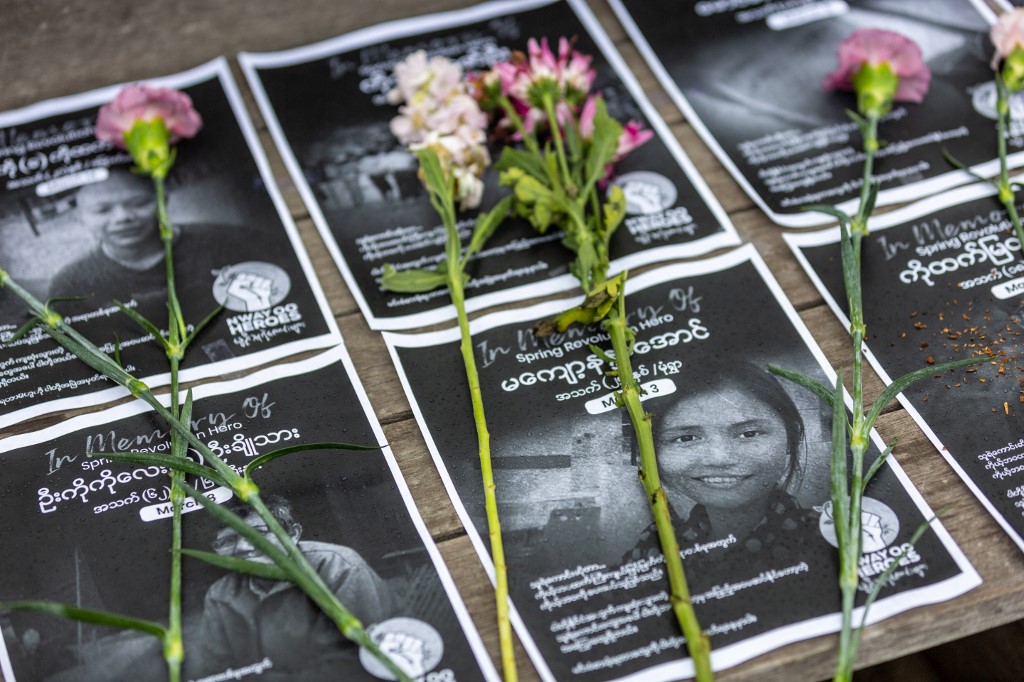What Matters No – 62 (February 1 to November 25, 2021)
(This article is a translation of the original Burmese language version that ISP-Myanmar posted on its Facebook page on November 27, 2021.)
After the military staged a coup d’état on February 1, 2021, violent crackdowns and injuries inflicted by the State Administration Council (SAC) have resulted in a total civilian death toll of at least 1,293 as of November 25. An independent organization, the Assistance Association for Political Prisoners (AAPP), collected personal data of 1,224 people as of November 25, although there may be many more who are not yet on this list. At the same time, SAC released their version of the death toll. According to their reported data, there were 1,564 deaths from February 1 to November 16, 2021. SAC reported that among them: 406 were accused of being military informants and killed; 253 were members of the Union Solidarity and Development Party (USDP) or their family member; 228 deaths were caused by other reasons; 198 were general administration department staff from the township and village levels; 192 deaths were caused by crackdowns during protests; 93 were SAC police; 69 deaths were caused by bombings; 38 were civil servants; and 12 were monks. Please note that this data is from a statement by the SAC but not verified by independent organizations. According to reports by the National Unity Government (NUG), clashes and conflicts between June 1, 2021 and November 6, 2021, resulted in 908 civilian deaths and 2,941 deaths of regime forces. Please note that this data has also not been verified by independent organizations.
- • Death toll rises
Compared to the data reported in What Matters No.59 (published on November 15, 2021), which was also based on reports by the AAPP, the death toll has risen by more than 35 deaths in just over two weeks as the number increased from 1,258 deaths by November 12 to at least 1,293 deaths by November 25.
- • Fatalities of young and middle-aged people
When categorizing the 1,293 death toll figure reported by the AAPP, people between the ages of 18-30 and 31-40 had the highest number of deaths, followed by those aged between 41-50. Regionally, the highest number of deaths were from Sagaing Region, while Yangon Region had the second highest number.
What Matters No.59 can be read from the following link: https://www.ispmyanmar.com/burmese/2021/11/15/wm-59/
- • Post-arrest death
From February 1, 2021 to November 25, 2021, at least 161 people died after being arrested by the State Administration Council (SAC). Among them, 78 deaths were caused by brutalities during arrest, 63 deaths were caused by systematic torture during interrogation, 20 deaths occurred in police stations, prisons, and other places of detention. Among the 83 people who died during interrogation or at places of detention, Mandalay Region had the highest total with 19 deaths. Sagaing Region had the second highest total with 18 deaths, then followed by Yangon Region with 16 deaths. By age range, the majority of people who died were children and young adults who totaled about 50 deaths. By gender, at least 78 people who died were male and at least 5 of them were female.
- • Over 123 headshot victims
According to data recorded by the AAPP, victims who had been shot in the head accounted for at least 123 deaths, or about 12 percent of the 1,014 people whose cause of death was documented. Among headshot victims, most of them were young people between the age 18 – 30, accounting for 52 percent of total headshot victims. The largest number of headshot deaths occurred in Sagaing Region, where 30 people were the victims of headshots.
- • Why does it matter?
Studying the number of violent crackdowns, the number of victims who died during those crackdowns, the number of people killed as a result of targeted operations, as well as studying exactly how people were killed, can provide insight into the extent to which regime forces have complied with internationally-agreed upon rules and regulations for dealing with mass protests. This data can also be used to determine whether human rights violations were committed from the perspective of transitional justice.
- • Other relevant readings
AAPP has collected detailed data on anti-coup protesters who were targeted and killed during the violent crackdowns in the aftermath of the February 1 military coup. The AAPP database includes the number and cause of death of the protesters; from these data we can begin to understand the way that regime forces have responded to the anti-coup movements and find evidence of human rights and dignity violations by the regime forces. Daily updates from the AAPP are also available on the organization’s website and social media pages, such as Facebook and Twitter. Any available information not yet contained in their updates can also be shared with the AAPP at [email protected] .
-All “What Matters” articles published by ISP-Myanmar can be read and downloaded from the following link: https://www.ispmyanmar.com/what-matters/

